Visit Rock-Cut Udayagiri Caves To Uncover The Ancient Marvels In 2026
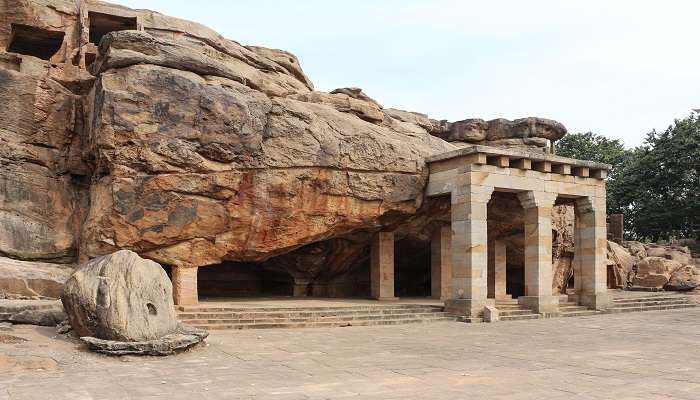
Your one step into the premises of Udayagiri Caves will take you back to the royal grandeur of ancient India. Situated in Madhya Pradesh’s Vidisha, about 60 km from the capital city of Bhopal, these rock-cut caves are evidence of the great artistic and architectural skills of artisans in the Gupta period. These caves were first discovered in the 19th century when some British officers stumbled upon these structures. Still, they later on Indian archaeologists and experts came together to unearth the history of this place. Whether you are an art lover, a history buff, or just a nature explorer, Udayagiri Caves promises a stimulating and enriching experience to one and all. These caves date back to the beginning of the 5th century CE and are a great site from the Gupta period, often called the golden age of Indian culture. There are 20 caves, each decked with beautiful sculptures and carvings reflecting the religious and cultural ethos of that period.
The Lost Grandeur Of Udayagiri Caves
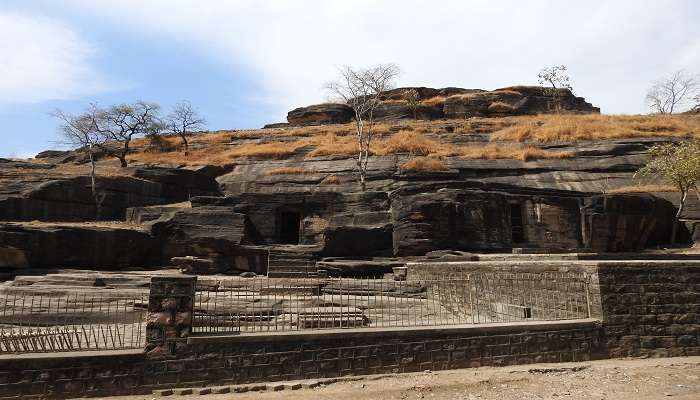
The Udayagiri Caves are situated near Vidisha, Raisen District, Madhya Pradesh. It is about 10 kilometres from Sanchi, yet another major site of immense historical importance. The major source of historical evidence on the site is its inscriptions. Written in Brahmi script, the inscriptions yielded key data that helped reconstruct the political, social, and religious life of the Guptas. From this site, some inscriptions concern rulers, officials, and religious donors, thereby helping historians piece together the history of this golden age. Visiting this tourist destination with your family and loved ones is recommended.
Ticket: Rs 250
Timings: 9 AM to 7 PM
Also Read: Jai Vilas Mahal
Key Attractions Of Udayagiri Caves
Udayagiri Caves is actually comprised of different cave systems. Some of the caves here that are worth exploring are mentioned below:
Cave 1

Cave 1 is the most significant cave out of all the caves in the complex since it represents the earliest phase of Hindu temple architecture. This small shrine, locally known as ‘Suraj-Gupta’ (the cave of the Sun God), is characterized by a small porch in front of the entrance.
The principal image enshrined is a colossal sitting figure of the sun god, carved from the living rock of the temple’s back wall but only half finished. It also contains an image of a standing Jain Tirthankara, showing its different religious significance.
Cave 3

This is dedicated to Kartikeya, Lord Shiva’s son. The architects’ simple yet elegant carving is done not only in the cave but also in its entrance itself. According to American scholar James Harle, the enshrined deity belongs to the most beautiful images of the 5th century CE.
Lord Kartikeya stands with his spear in his right hand and the left almost near his waist. Kartikeya’s hair, as indicated above, has been intricately detailed in three strands, adding to the detailed artistry of the sculpture.
Related Posts: Resorts Near Satupura National Park
Cave 5
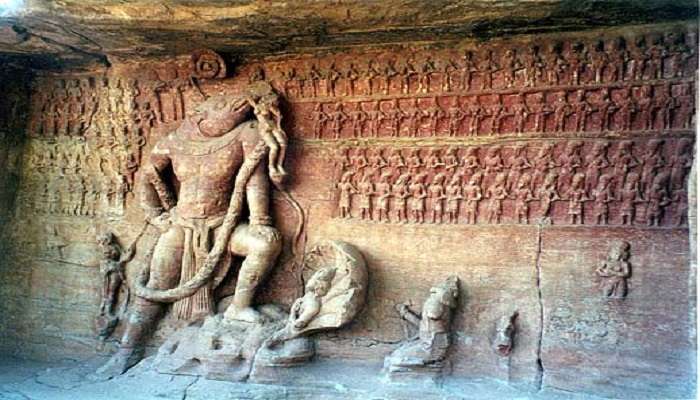
Cave 5 is one of the most popular caves in this place, and it draws a large number of tourists, especially those who come to see it. The story narrates how Hiranyaksha, a demon, once abducted Bhudevi, the Earth goddess, and hid her in water depths.
Lord Vishnu showed up to rescue her by taking on the avatar of a boar, Varaha. He killed the demon, lifted Bhudevi onto his right tusk, and returned her to her place in the universe, saving the Earth from cosmic danger.
Cave 7

Cave 7 is popularly known as ‘Tawa Cave’ among the locals because it is crowned by large flat stones resembling a gigantic tawa. T
here is an inscription in Gupta Brahmi script written by Virasena, minister of Chandragupta-II, which mentions the emperor’s visit to Udayagiri on his way to conquer the world. This is the only written record in which the visit of the Gupta emperor Chandragupta-IIIIIIII is supported by evidence.
Related Posts: Atal Park Sagar
Cave 13

Cave 13 is a sizeable rock-cut image of the reclining Lord Vishnu and is located on the coil of the Sheshnag snake; his head rests on the palm of one of his four hands.
He is attended by his vehicle, Garuda, which is represented as a bird. This is one of the earliest and largest images of the reclining Hindu god Vishnu. This is another trendy cave that draws Hindus from all across the country to this place.
How To Reach Udayagiri Caves

By Air: The closest airport is the Raja Bhoj Airport in Bhopal, which is well-linked to major Indian cities. One can easily hire a taxi or board a bus from the airport to Vidisha.
By Train: The nearest railway station is Vidisha. This station is connected to most parts of the country. One can hire a taxi or an auto-rickshaw from the station to Udayagiri Caves.
By Road: Vidisha is well connected by road. You can drive from Bhopal or hire a taxi. There are also regular bus services from Bhopal to Vidisha.
Related Posts: Satpura National Park
Five Nearby Tourist Destinations
Some of the most popular tourist destinations near Udayagiri Caves are given below:
1. Sanchi Stupa
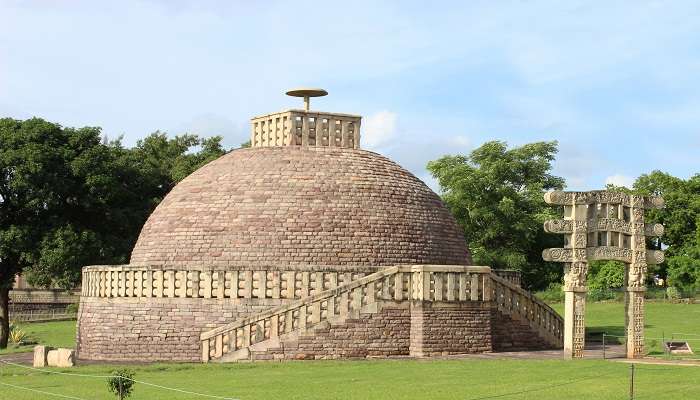
Located around 10 km from Udayagiri, Sanchi Stupa is a UNESCO World Heritage Site and one of the primary Buddhist monuments in India. Emperor Ashoka constructed it in the 3rd century BCE. The Stupa reflects the greatness of its central dome, richly ornate gateways, and the serenity around the structure. The site comprises several stupas, temples, and monasteries reflecting ancient India’s architectural and artistic greatness. On the gateways, exquisite carvings depict scenes from Buddha’s life and Buddhist lore. Sanchi Stupa is a place not to be missed by anyone who is a history enthusiast or has an interest in Buddhist art and culture.
Distance From Udayagiri Caves: 10.3 Km
Timings: Sunrise to Sunset
2. Bijamandal Temple
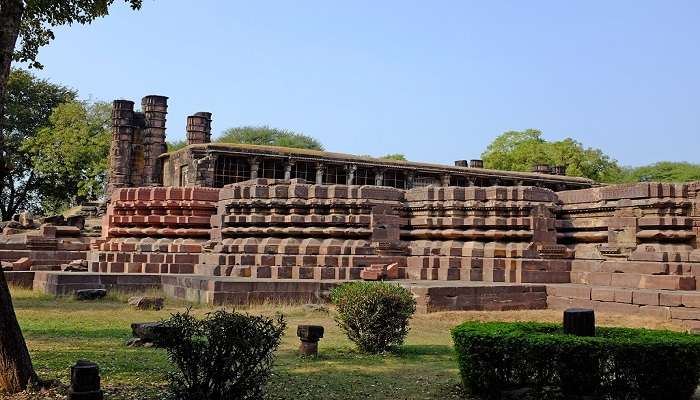
Located in Vidisha, the Bijamandal Temple is an ancient Hindu temple dedicated to Lord Shiva. It is now just an ancient ruin, but its architectural style and intricate carvings are evidence of ancient Indian temple architecture. The site is quiet and not crowded, making it perfect for quiet introspection and exploration. This ancient temple depicts highly developed craftsmanship and spiritual heritage, which can be read as a history in stone—hence, it is one of the exciting destinations for history and architecture lovers.
Distance From Udayagiri Caves: 5.4 Km
Timings: 10:30 am–6 pm
Related Posts: Rahatgarh Waterfall
3. Gyaraspur
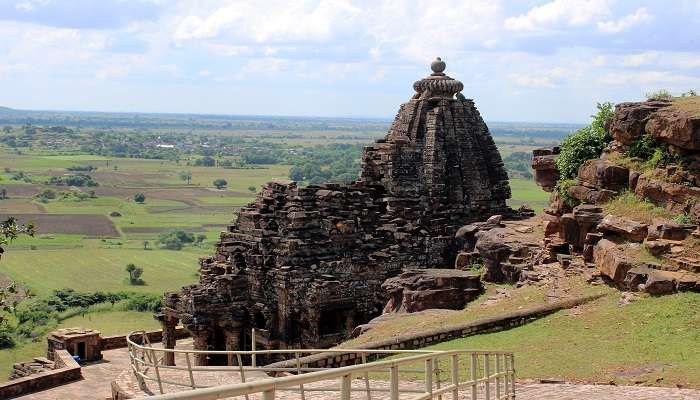
Gyaraspur is a tiny town located at a distance of 35 km from Udayagiri that houses ancient temples and monuments from the 9th and 10th centuries. The important places of interest are the Athkhamba and Bajramath temples, which have exquisite carvings and architectural brilliance. This town has been literally like an open book on medieval Indian art and architecture, reflecting most vividly in its cultural ethos and also the range of craftsmanship that became synonymous with that era. One can head to Gyaraspur to experience India’s historical and architectural past at its best.
Distance From Udayagiri Caves: 42.5 Km
Timings: NA
4.Khamba Baba (Heliodorus Pillar)

Vidisha is home to the Khamba Baba pillar, an ancient monolithic pillar from the Mauryan period. The high polish on the surface and inscriptions on the pillar testify to the great skill ancient Indian craftsmen used to attain. It is not that popular as a site, but it attracts several history buffs and monument enthusiasts. This place gives an insight into the architectural and artistic works done during the Mauryan period, which is fascinating for the viewer. If you like to follow Indian history, this is a must-visit tourist destination.
Distance From Udayagiri Caves: 4.8 Km
Timings: 8 am–5 pm
Related Posts: Ancient Aabchand Caves
5. Sanchi Museum
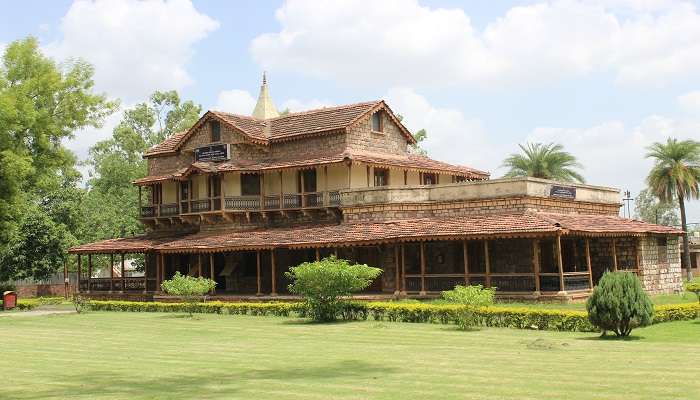
One of the places that no visitor interested in history or archaeology should miss is the Sanchi Museum, located in Bhopal. It has a significant collection of artefacts and relics from the Sanchi Stupa and other nearby ancient Buddhist sites. The essence of the Sanchi Museum is to exhibit sculptures, pottery, inscriptions, and many other exhibits that give an insight into the Buddhist art and culture of ancient India. These well-preserved pieces, like the famous Ashokan lion capital and intricate stone carvings, do give one a glimpse of the workmanship of those times. One could get an in-depth understanding of the historical and cultural importance of the Sanchi Stupa complex from the Sanchi Museum.
Distance From Udayagiri Caves: 9.5 Km
Timings: 9 am–5 pm
You May Also Like To Read: Places To Visit In Bodh Gaya
Udayagiri Caves provide a glimpse of the great cultural-religious life that existed during the Gupta period in India. This ancient site is typical of artistic greatness and imparts valuable historical lessons through its richness in inscription and sculpture. From the awe-inspiring Varaha avatar to the serene Jain Tirthankaras, every cave has a tale of devotion, artistry, and history. Whether one is a solo traveller, a history enthusiast, or even just a family looking for a day outdoors and some learning, the Udayagiri Caves will fascinate one. The serenity of the surroundings and deep historical importance attract visitors who want to learn more about India’s ancient heritage. Welcome to the Udayagiri Caves and explore through the ages on an enriched and inspired journey. Book your trip to Madhya Pradesh right now and explore Udayagiri Caves.
For our editorial codes of conduct and copyright disclaimer, please click here.
Cover Image Credit: Bernard Gagnon for wikimedia commons
Frequently Asked Questions About Udayagiri Caves
What are the Udayagiri Caves famous for?
The Udayagiri Caves are renowned for rock-cut sculptures and inscriptions attributed to the Gupta period. They throw considerable light upon the artistic, religious, and cultural life of ancient India. They are an important site to get an insight into the history of the Gupta dynasty.
Are the caves of Udayagiri open to all?
Yes, the caves of Udayagiri are open to all. However, some of the caves need to be negotiated through rough ground and steps with some amount of moderate physical effort.
Am I allowed to take photographs at the Udayagiri Caves?
Of course, you can take pictures at the Udayagiri caves. However, touching the sculptures and damaging any of the carvings is not permitted. Visitors should respect such.
What is the best time to visit Udayagiri Caves?
The best time to visit the Udayagiri Caves is between October and March as the weather is pleasant and suitable for visiting the site.
Is there any accommodation near Udayagiri Caves?
Although there are no accommodation facilities provided on the site itself, Vidisha and Bhopal, located nearby, offer more choices. The two cities provide accommodations that range from low-cost budget hotels to luxury resorts.
People Also Read:
Antharagange Caves Belilena Cave Sung Sot Cave

With a passion for exploring and travelling to the roads long forgotten, experience the world through enthralling stories and adventures. Join me as I share my experiences at some of the world’s most popular tourist destinations and quench that pestering curiosity with something exciting!











